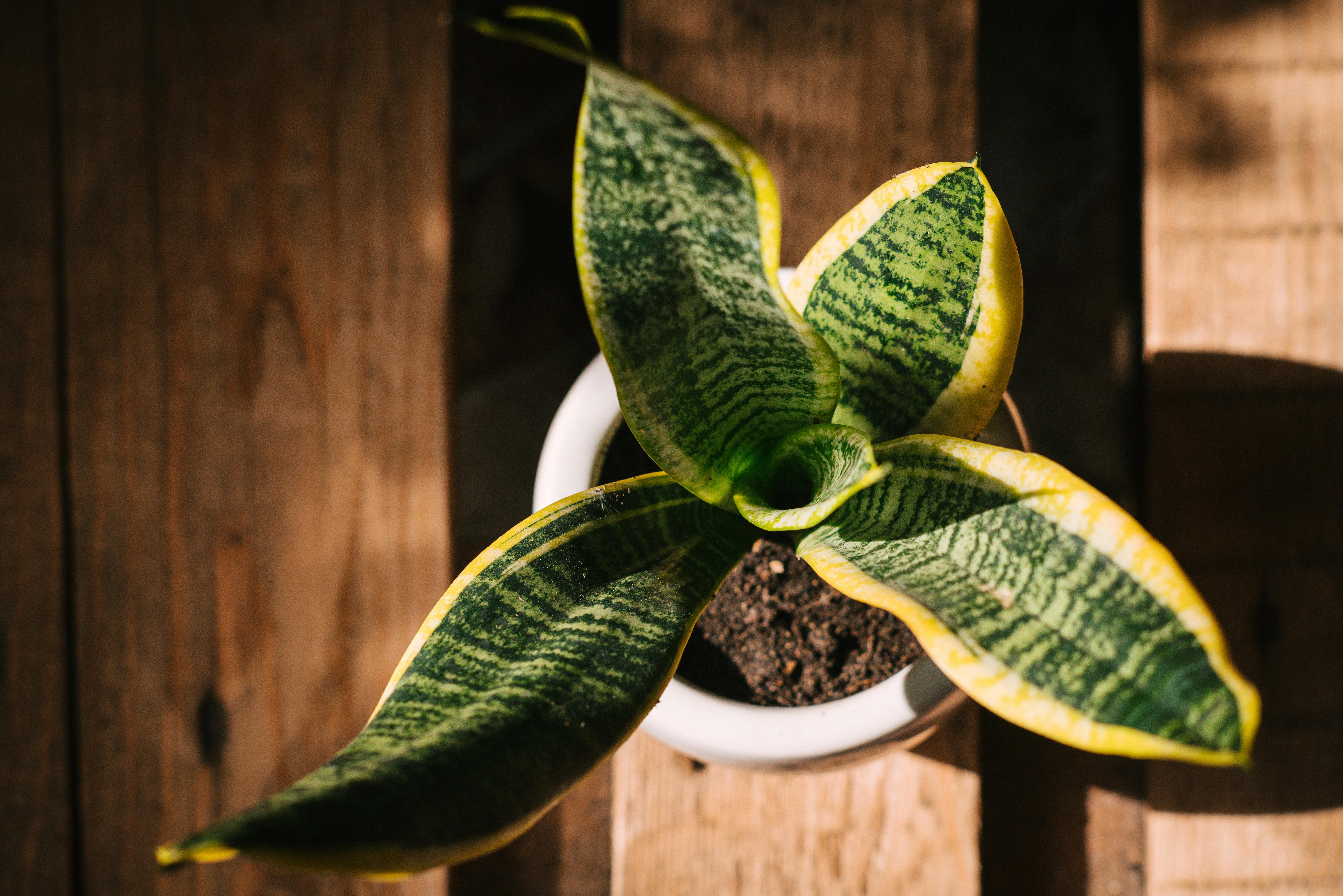The Snake Plant (Dracaena trifasciata) is a popular houseplant that’s known for its striking foliage and low maintenance care requirements. One of the most common questions asked about this hardy plant is “How much sunlight does a Snake Plant need?” This article will provide you with an overview of the lighting requirements for the Snake Plant, including tips on how to provide it with the right amount of light.A Snake Plant does not need a lot of sunlight to grow and thrive. It can survive in moderate to low light conditions, making it an ideal plant for dark corners of the home or office. However, it will do best if given bright, indirect sunlight for 4-6 hours per day.
Snake Plant Sunlight Requirements
Snake plants, also known as Sansevieria, are incredibly resilient and easy to care for houseplants. They have long, sometimes variegated leaves that are almost unbreakable and can thrive in a wide range of conditions. One of the most important aspects of caring for a snake plant is providing the right amount of sunlight. Snake plants can survive in both bright indirect light and low light conditions, however they will grow faster with more light. In areas with extremely low light levels, the snake plant will likely not produce new growth or may even start to decline. If you notice that the leaves of your snake plant appear to be turning yellow or pale green, this is usually a sign that it needs more sunlight.
For best results, place your snake plant in an area with bright indirect sunlight for at least 4-6 hours each day. If you find that your snake plant is not getting enough light, you can move it closer to a window or place it in an area with brighter light conditions. You should avoid direct sunlight as this can burn the leaves and cause them to become discolored or damaged. When it comes to temperatures, snake plants prefer temperatures between 65-80°F (18-27°C) during the day and 55-65°F (12-18°C) during the night.
What Kind of Sunlight Does A Snake Plant Need?
Snake plants are a hardy, low-maintenance houseplant that can survive in many different types of light conditions. While they do need some sunlight to thrive, too much direct sun can cause the leaves to turn yellow or brown. Ideally, a snake plant should receive bright, indirect light for most of the day. They can also tolerate low or fluorescent light if necessary.
For outdoor plants, it’s best to place them in a partially shaded area that receives morning sun and afternoon shade. This will help protect them from too much intense sunlight. If you have an indoor snake plant, you can place it near a window that receives plenty of bright indirect light but not too much direct sun.
Snake plants are very forgiving houseplants and can adapt to most lighting conditions if given enough time. While they prefer bright, indirect light for most of the day, they can also survive in low or fluorescent light as well as shady outdoor areas. With the right care and attention, your snake plant will thrive no matter where you decide to put it.
Does A Snake Plant Need Direct Sunlight?
Snake plants, also known as Sansevieria or mother-in-law’s tongue, are an incredibly hardy houseplant that can withstand low light and drought conditions. Despite the plant’s ability to survive in low light, it will still benefit from some direct sunlight. The amount of direct sunlight a snake plant needs will depend on the variety and how much light is available in its environment.
Snake plants can tolerate a range of light levels, but they do best with bright indirect light or even several hours of direct sunlight each day. If your snake plant is kept indoors, try to place it near a bright window where it will receive several hours of direct sunlight each day. For outdoor plants, choose an area that gets dappled shade during the afternoon or morning sun for four to six hours a day.
However, it’s important to keep in mind that too much direct sunlight can be damaging for your snake plant. If you notice the leaves start to yellow or develop brown spots, this could be a sign you’re providing too much sun exposure. In this case, move your plant to an area with less direct sunlight or provide additional shade with a sheer curtain if the window is too sunny.
Regularly monitoring your snake plant and adjusting its position based on how it looks is the best way to ensure that your plant receives the right amount of sun exposure without getting too much. With proper care and attention, your snake plant should thrive even in lower light conditions!
Too Much Sunlight
Snake plants are resilient and tolerant of a variety of conditions, but too much sunlight can be detrimental. The foliage will start to yellow and the edges of the leaves may become crispy. This is a sign that your snake plant is getting too much sun. If you notice this happening, make sure to move your snake plant to a location with less direct sunlight.
It is best to keep your snake plant in indirect or filtered light, such as near a window that has a sheer curtain or an area with indirect natural daylight. You can also supplement the natural light with artificial lights for indoor plants. If you do decide to use artificial lighting, make sure it is specifically designed for plant growth as too much or too little light can cause damage to your snake plant.

Signs Of A Snake Plant Not Getting Enough Sunlight
A snake plant, also known as Sansevieria or Mother-in-law’s Tongue, is a popular houseplant that is known for its low maintenance and air-purifying qualities. While it is generally an easy-care plant, snake plants do need adequate sunlight to survive. Without enough sunlight, the leaves of your snake plant may begin to yellow or become limp and flop over. Here are a few signs that your snake plant is not getting enough sunlight:
The most obvious sign of not enough sunlight is yellow leaves. If your snake plant’s leaves start to turn yellow or become discolored, it’s a clear indication that it’s not getting enough light. The leaves may also start to curl up or droop down if the plant isn’t receiving sufficient light exposure.
Another sign that your snake plant isn’t getting enough sunlight is stunted growth. If the leaves are not growing as quickly as they should be and remain small for an extended period of time, this could be a sign that your snake plant isn’t receiving enough light.
Finally, you may also find that your snake plant doesn’t produce any flowers if it isn’t getting sufficient light exposure. Snake plants are known to produce small white blooms but if the lighting conditions aren’t ideal, these flowers will never appear.
If you think your snake plant isn’t getting enough sunlight, try moving it to a sunnier spot in your home and monitor its progress over the next few weeks. If you still find that the leaves are starting to yellow or curl up after adjusting its location, you may need to invest in some artificial lighting in order to give it the light exposure it needs.
Too Much Sunlight
Snake plants are known for their ability to tolerate a wide range of growing conditions, including direct sunlight. While they can thrive in bright, indirect light, too much direct sunlight can be damaging to the plant. If exposed to too much direct sunlight, the leaves may become yellow and dry out. The edges of the leaves may also become discolored or burned. Over time, this can cause the leaves to die off and may even lead to root rot. To prevent this from happening, it is important to provide your snake plant with some protection from direct sunlight during the hottest part of the day.
Too Little Sunlight
Snake plants need a good amount of light to stay healthy and vibrant, but they should not be exposed to too much or too little light. If your snake plant is not getting enough light, the leaves will start to stretch out and become limp. The plant will also start producing fewer new leaves and its growth rate will slow down significantly. Without adequate light, your snake plant may eventually die off if it is not provided with enough light soon enough. To keep your snake plant healthy and thriving, it is important to give it access to indirect bright light for at least several hours a day.
Best Placement for a Snake Plant to Receive Optimal Amount of Sunlight
Snake plants, or Sansevieria trifasciata, are a popular house plant that can bring life and color into any home. These plants thrive in warm and bright conditions and need the right amount of sunlight to stay healthy. To ensure your snake plant receives optimal sunlight, it is important to consider the best placement for your particular environment.
It is ideal to place your snake plant in an area where it will receive bright indirect sunlight throughout the day. If you have a south-facing window that gets direct sunlight, this is an excellent spot for your snake plant as long as you are able to move it away from the window if the sun becomes too intense. If you have an east-facing window, this is also a good spot for your snake plant as long as it does not receive more than four hours of direct sunlight each day.
For those who do not have access to natural light, artificial lighting can also be used but make sure to provide your snake plant with at least 10 hours of light per day and supplement with additional artificial light if necessary. It is best to use full spectrum bulbs when using artificial lighting to ensure your snake plant gets all the nutrients it needs from the light sources available.
If you are unsure where to place your snake plant, try experimenting with different locations around your home until you find one that works best for you and your particular environment. Remember that too much direct sunlight can cause damage to the leaves of your snake plant so be sure to move it away from windows if necessary or use curtains or blinds on sunny days. With the right care and placement, you can keep your snake plants healthy and thriving!

Conclusion
In conclusion, snake plants need moderate to low levels of sunlight to grow and thrive. They can survive in indirect light but too much exposure to direct sunlight can lead to sunburn and other health problems. The best way to ensure your snake plant gets the right amount of sunlight is to keep it in a spot with bright but indirect light or place it in a spot that gets some direct sunlight for only a few hours each day.
It is important to remember that all plants are different and may need different amounts of light, so it is best to research your particular species of snake plant and adjust the amount of sunlight it receives accordingly. With the right care, your snake plant should stay healthy and continue producing beautiful foliage for years to come.

